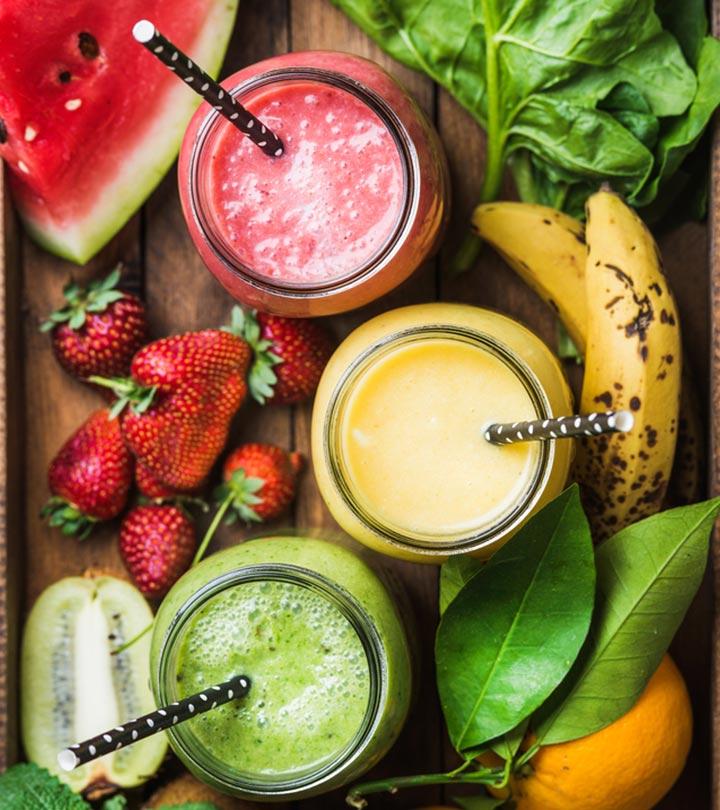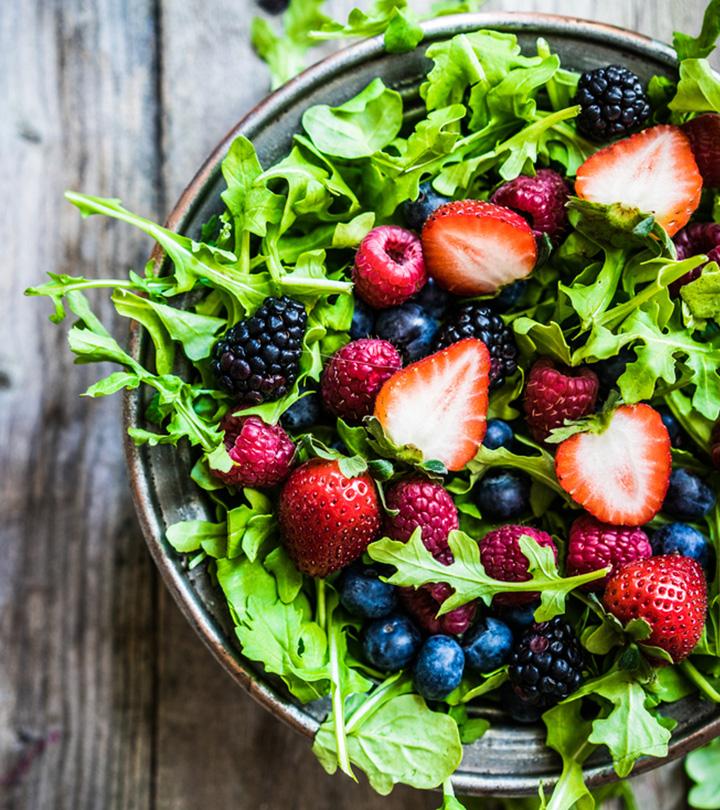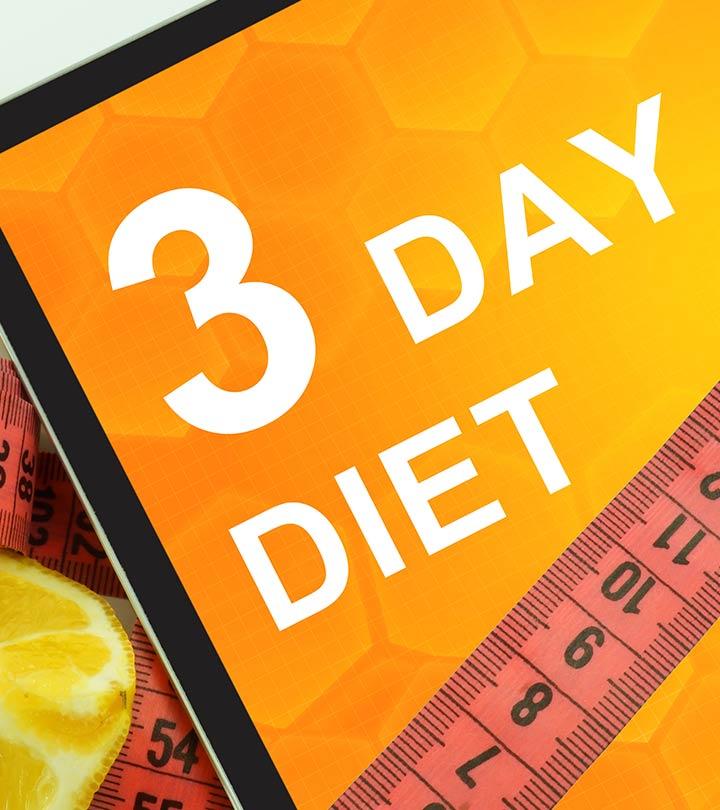GAPS Diet: What Is It? How Can It Help You?
Take the first step towards a transformative wellness journey by prioritizing your gut health.

Image: Shutterstock
The GAPS diet stands tall as a therapeutic approach with a clear mission – the restoration of gut health and enhancement of overall well-being. It restricts the intake of processed foods and potential sources of inflammation while focusing on nutrient-rich foods like bone broth, fermented items, and non-starchy vegetables. The GAPS diet is considered an alternative or complementary treatment for conditions such as digestive disorders, autism spectrum disorder,i A developmental disorder that affects the way a person’s brain works, especially in how they communicate, socialize, and behave. and mental health issues. Yet, we must tread carefully, as the diet’s effectiveness remains a topic of spirited debate. The GAPS diet’s stringent and restrictive nature has, over time, sparked its share of controversies. Keep reading to learn more about the GAPS diet, its principles, and whether it suits your needs.
 At A Glance: GAPS Diet
At A Glance: GAPS Diet- Principle: A diet focused on healing the gut by eliminating processed foods and opting for nutrient-dense options like fermented foods and non-starchy vegetables.
- Purpose: To manage the symptoms of digestive disorders, autism spectrum disorder, and mental health issues, with an emphasis on gut health restoration.
- Who It Is For: Individuals seeking an alternative approach for digestive and mental health issues.
- Duration: Long-term
- Who Should Avoid: People with nutritional deficiencies and a history of or current eating disorders.
- Cons: A restrictive diet that has limited scientific backing and may be difficult to adhere to.
In This Article
What Is The GAPS Diet?
The GAPS diet stands for Gut and Psychology Syndrome diet and was created by Dr. Natasha Campbell-McBride, a neurologist. This diet focuses on the strong link between gut health and our overall well-being.
It was designed to help with various chronic conditions, like autoimmune diseasesi Conditions in which your immune system, which normally protects you from infections, mistakenly starts attacking your own body. , neurological disorders, allergies, fatigue, and digestive issues, that were assumed to originate from an unhealthy gut (1), (2).
In 2019, a staggering 35.4 million visits to physician offices in the US were primarily attributed to digestive diseases, according to data from the National Ambulatory Medical Care Survey. Furthermore, 8 million emergency department visits in 2020 were attributed to digestive system diseases as the primary diagnosis (3). These statistics highlight the importance of promoting and maintaining digestive well-being.
This diet centers around the gut microbiome, i.e., the community of bacteria living in your digestive system. Research shows that the gut microbiome influences nearly every aspect of our health, including metabolism, digestion, and nutrient absorption (4).
The GAPS diet uses dietary changes, supplements, principles of reducing toxin buildup, and a few lifestyle adjustments to restore both gut and brain function, ultimately aiming to improve your overall health and quality of life.
Keep scrolling to learn more about this diet and its different stages that you need to follow for a successful diet.
What Are Different Stages Of The GAPS Diet?
The GAPS diet is a multi-stage approach to improving your gut health and restoring its balance. It needs to be followed in three main stages as follows:
1. Introduction Phase
This first step involves eliminating problematic foods like grains, starchy vegetables, refined carbs, and pasteurized dairy products. Over the course of six sub-stages, you gradually introduce homemade soups, broths, and fermented foods like sauerkraut into your diet. This phase is meant to calm inflammation and start the gut’s healing process.
The six stages of the GAPS introduction phase are as follows:
- Stage 1: You can consume homemade stock, soups with boiled meats and vegetables, boiled meats, fish, and shellfish, cooked vegetables, animal fats, coconut oil, probiotic foods, sea salt, peppercorn, fresh herbal tea, filtered water with lemon, and raw honey.
- Stage 2: Continue with Stage 1 foods but also include raw, organic egg yolks separated from the whites, stews, and casseroles with fresh herbs, probiotic foods, fermented fish and gravlax, homemade ghee, fresh herbs, and cod liver oil.
- Stage 3: You can start adding ripe avocado, homemade pancakes, nut butters, various egg preparations, cooked onions, cooked fibrous vegetables, fermented vegetables, and probiotic supplements to your diet plan.
- Stage 4: Continue with foods from the previous stages and introduce roasted and grilled meats, cold-pressed olive oil, fresh pressed juices, and nut flour for baked goods and bread.
- Stage 5: Continue with foods from the previous stages and include apples cooked with fat, raw vegetables, and fresh pressed fruit juice added to vegetable juice.
- Stage 6: Continue with foods from the previous stages and enjoy raw fruits from the GAPS-approved list, gradually increasing raw honey, sweet baked goods, and additional items like dried fruit, probiotic drinks, coconut milk, spices, and soaked nuts/seeds in moderation.
You can move on to the next stage when you can digest these foods without any problems and have regular bowel movements. The duration of each phase can vary, spanning from three weeks to a full year, depending on the severity of your symptoms.
2. Full GAPS Diet/Maintenance Phase
In this phase, you can eat non-starchy vegetables, fruits, meats, fish, eggs, nuts, and healthy fats as the initial healing of the gut has begun. However, grains, processed carbs, sugars, and starchy veggies are still off-limits. The full GAPS diet typically spans 1.5 to 2 years in duration.
3. Reintroduction Phase
The diet suggests moving on to the reintroduction phase when your digestion and bowel movements have been normal for at least 6 months. Here, you slowly reintroduce excluded foods to see how your body reacts over several months by starting with small amounts of each food. This helps pinpoint any specific sensitivities causing your digestive or health issues.
The diet does not detail the order or the exact foods you should introduce. However, it states that you should start with potatoes and fermented, gluten-free grains. Avoid highly processed and sugary foods and stick to whole, natural foods.
Note: Remember that the GAPS diet is highly individualized, and the duration of each stage may vary depending on your specific needs and progress. It is recommended to work with a healthcare professional or a qualified dietitian to ensure you are following the diet correctly and meeting your nutritional needs.
 Pro Tip
Pro TipThe GAPS diet claims to offer several potential benefits for individuals with gut health issues and related conditions. Keep reading to learn more about them.
What Are The Benefits Of The GAPS Diet?
- May Promote Gut Healing
This diet may be helpful for those with a leaky gut or digestive issues. The quintessential Western diet, marked by its excessive consumption of processed foods, sugars, unhealthy fats, and low fiber, significantly raises the risk of gut inflammation and irritation. This dietary pattern, lacking in essential fiber and rich in sugars and processed additives, disrupts the balance of gut bacteria, promotes inflammation, and compromises the integrity of the gut lining (5).
The GAPS diet aims to eliminate these problematic foods. It may help soothe and reduce gut inflammation by cutting out foods that irritate the gut and adding in nutrient-packed ones (5).
- May Improve Digestion
The GAPS diet puts a spotlight on foods that are easy on your stomach, like homemade broths, soups, and fermented goodies. Thus, it may aid digestion while also providing several beneficial nutrients for your health. However, more research is warranted in this regard.
- May Promote Gut Microbiota
The diet promotes the consumption of fermented foods that are full of good bacteria. These probiotics help balance your gut microbes that are vital for good digestion, a strong immune system, and general well-being (6), (7).
- May Reduce Inflammation
Gut inflammation may be detrimental to your health. The GAPS diet avoids foods that can worsen this condition, like processed carbohydrates and sugars. By doing so, it calms down gut inflammation and may even ease certain inflammation-related symptoms (8).
- May Boost Mental Health
The GAPS diet recognizes the connection between gut health and mental health. The gut and brain communicate through the gut-brain axis. They are connected through the autonomic nervous system, the hypothalamic-pituitary-adrenal (HPA) axis, and GI tract nerves. This connection lets the brain affect the gut function and the gut influences your mood and mental health. Research indicates that the gut microbiota can, directly and indirectly, impact the brain (9).
Thus, a healthy gut can positively influence brain function (9). By improving gut health, this diet may help alleviate symptoms of conditions like anxiety, depression, and ADHD. However, more research needs to be conducted in this regard.
 Pro Tip
Pro TipAs discussed above, the GAPS diet is a highly restrictive diet. This means that to follow it faithfully, you need to let go of certain food groups from your diet. Keep reading to learn which foods you can have and the ones to avoid while on this diet.
What Can You Eat In The GAPS Diet?
1. Non-Starchy Vegetables
- Broccoli
- Cauliflower
- Spinach
- Kale
- Zucchini
- Brussels sprouts
2. Fruits
- Berries
- Apples
- Pears
- Citrus fruits
3. Meats And Poultry
- Beef
- Lamb
- Chicken
- Turkey
- Game meats
- Eggs
It is recommended to opt for organic, grass-fed, or pasture-raised options.
4. Fish And Seafood
- Salmon
- Mackerel
- Sardines
- Shrimp
- Scallops
- Shellfish
5. Fermented Foods
- Sauerkraut
- Kimchi
- Kefir
- Yogurt
6. Healthy Fats
- Avocado
- Coconut oil
- Olive oil
- Ghee
- Animal fats
Aside from these foods, dietary supplements like omega-3 fatty acids, multivitamin, mineral, and vitamin D supplements are allowed on the diet. However, please consult your doctor before taking any supplements.
 Pro Tip
Pro TipFood To Be Avoided While On The GAPS Diet
1. Grains
- Wheat
- Rice
- Oats
- Corn
- Barley
2. Processed Carbohydrates
- Bread
- Pasta
- Cookies
- Cakes
- Pastries
3. Starchy Vegetables
- Potatoes
- Sweet potatoes
- Yams
4. Added Sugars
5. Processed And Packaged Foods
Following the GAPS diet is all about taking the right approach. Check out a sample diet plan in the next section to help you get started.
GAPS Diet Meal Plan
Day 1
| Meal | What To Eat |
|---|---|
| Breakfast | 2 scrambled eggs with spinach and a side of sauerkraut |
| Lunch | 1 bowl of beef and vegetable stir-fry cooked in coconut oil |
| Snacks | 1 sliced pear |
| Dinner | Baked salmon (85-115 g) with steamed broccoli and cauliflower |
Day 2
| Meal | What To Eat |
|---|---|
| Breakfast | 1 cup of Greek yogurt with a sliced apple and a drizzle of honey |
| Lunch | 3 turkey and avocado lettuce wraps with a side of sauerkraut |
| Snacks | A handful of mixed berries |
| Dinner | Grilled shrimp (85-115 g) with sautéed kale and zucchini |
Day 3
| Meal | What To Eat |
|---|---|
| Breakfast | Omelet (2 eggs) with spinach and mushrooms |
| Lunch | 1 bowl of spinach and kale salad with grilled salmon and an olive oil dressing |
| Snacks | 8-10 almonds |
| Dinner | Baked chicken thighs (85-115 g) with roasted Brussels sprouts |
Day 4
| Meal | What To Eat |
|---|---|
| Breakfast | 2 scrambled eggs with sautéed spinach and a side of sauerkraut |
| Lunch | 1 bowl of chicken and vegetable curry cooked in coconut oil |
| Snacks | 1 sliced apple |
| Dinner | 1 bowl of beef stew with cauliflower rice |
Day 5
| Meal | What To Eat |
|---|---|
| Breakfast | 1 cup of Greek yogurt with sliced citrus fruits |
| Lunch | 1 bowl of turkey and avocado salad with mixed greens and an olive oil dressing |
| Snacks | A handful of mixed berries |
| Dinner | Baked mackerel (85-115 g) with steamed broccoli |
Day 6
| Meal | What To Eat |
|---|---|
| Breakfast | 2 scrambled eggs with sautéed kale and a side of kimchi |
| Lunch | 1 bowl of grilled chicken salad with mixed greens |
| Snacks | 1 sliced pear |
| Dinner | Roasted chicken (85-115 g) with Brussels sprouts |
Day 7
| Meal | What To Eat |
|---|---|
| Breakfast | Omelet (2 eggs) with zucchini and tomatoes |
| Lunch | 1 bowl of beef and vegetable soup made with bone broth |
| Snacks | 8-10 almonds |
| Dinner | Grilled scallops (85-115 g) with sautéed spinach and cauliflower |
Now, let’s take a look at a few yummy dishes you can prepare while following this diet.
GAPS Diet Recipes
1. Beef And Vegetable Soup With Bone Broth
Ingredients
- 1 pound grass-fed beef stew meat
- 8 cups homemade bone broth
- 2 carrots (chopped)
- 2 celery stalks (chopped)
- 1 onion
- 2 cloves garlic (chopped)
- 1 cup cauliflower florets
- 1 cup broccoli florets
- 1 cup spinach leaves
- 2 tablespoons olive oil
- 1 teaspoon dried thyme
- Salt and pepper to taste
How To Prepare
- Heat up the olive oil in a big pot over medium heat.
- Cut the meat into cubes and cook until golden brown all around.
- Set the meat aside.
- In the same pot, add onions and garlic and cook until clear.
- Add the beef back into the pot along with the carrots and celery.
- Sauté till the vegetables soften.
- Pour in the bone broth, bring to a boil, then simmer with the pot covered for 30 minutes.
- Add the cauliflower florets and simmer for 10-15 minutes till the meat is tender.
- Mix in the broccoli florets, spinach, and thyme, and simmer for 5 minutes till the broccoli turns bright green.
- Season with salt and pepper.
2. Baked Mackerel With Steamed Broccoli
Ingredients
- 2 mackerel filets
- 2 cups broccoli florets
- 2 tablespoons olive oil
- 1 lemon (thinly sliced)
- 1 onion (thinly sliced)
- 1 teaspoon dried herbs
- Salt and pepper to taste
How To Prepare
- Preheat your oven to 375°F (190°C).
- Place the mackerel filets on a baking sheet lined with parchment paper.
- Drizzle olive oil and sprinkle the dried herbs, salt, and pepper all over the mackerel.
- Lay the lemon and onion slices on top of the filets.
- Bake the mackerel for 15-20 minutes until it flakes with a fork.
- Steam the broccoli for 5-7 minutes till tender.
- Place the mackerel filets on a plate and add the steamed broccoli on top of them.
While relishing these delightful GAPS diet meals, you are also nurturing your gut. However, this diet is not a fit for everyone. It poses certain risks, and it is important to understand them. Learn more about it in the next section.
What Are The Risks Of The GAPS Diet?
1. Restrictive Nature
This diet is highly restrictive as it cuts out many major food groups, including grains, legumes, and certain dairy products. This makes it challenging to get all the essential nutrients your body needs.
2. Nutrient Deficiencies
Due to food restrictions, there is a risk of missing out on important nutrients like dietary fiber that can affect digestive health. These restrictions may lead to potential nutrient deficiencies if the diet is not carefully planned and monitored. Thus, it is important to ensure adequate intake of nutrients through alternative food sources or appropriate supplementation (10).
3. Lack Of Scientific Evidence
Although anecdotal reports suggest the benefits of the GAPS diet for certain individuals, there is limited scientific research specifically evaluating the effectiveness and safety of this diet. Thus, it may not work the same way for everyone, and more rigorous studies are needed to establish its efficacy and potential risks.
4. Potential Disruption Of Gut Microbiome
While the GAPS diet aims to improve gut health, its impact on the gut microbiome is not yet fully understood. Abrupt changes in dietary patterns may potentially disrupt the balance of gut bacteria and have unintended consequences on your overall health (11).
We recommend that the GAPS diet should be followed under the guidance of a healthcare professional or a qualified dietitian who can provide personalized advice and support. They can help address potential risks, monitor nutrient status, and ensure that the diet is appropriate for your specific health needs and goals.
The GAPS diet can be a helpful dietary approach for better gut health. It focuses on nourishing foods that support digestion and overall well-being. But remember, it is not a one-size-fits-all solution. It has its limitations, like its strict restrictions and potential nutrient gaps. Thus, it is important to work closely with a healthcare provider or a dietitian to make sure you follow a meal plan that is right for you. A balanced approach that suits your individual needs may be the best way to support your gut and overall health in the long run.
Infographic: The 3 Phases Of The GAPS Diet
If you have just started on your GAPS diet journey, keeping track of all the phases along with what you can and can’t eat may get confusing. Whether you are seeking to improve your gut health or explore a new dietary approach, the following infographic will help you make informed choices for your overall well-being.
Check out the infographic below to learn more about the key phases of the GAPS diet.

Illustration: StyleCraze Design Team
Frequently Asked Questions
Is the GAPS diet like keto?
The GAPS diet and keto diet have some similarities in terms of carbohydrate restriction, but they differ in their focus and approach to overall health and healing. The GAPS diet prioritizes gut health, while the keto diet aims to achieve weight loss via ketosis.
Is the GAPS diet good for anxiety?
Possibly. The GAPS diet’s potential benefits for anxiety are debated as it is not backed by scientific studies. Some individuals believe it may help relieve the symptoms of anxiety due to the gut-brain connection, but more research is needed to prove the same.
3. Is peanut butter allowed on the GAPS diet?
No, peanut butter is not typically allowed on the GAPS diet as it is a legume, and legumes are to be avoided in this diet.
Is the GAPS diet the same as the FODMAP diet?
Although both diets focus on digestive health, they are not the same. The GAPS diet aims to heal the gut, while the FODMAP dieti Fermentable Oligosaccharides, Disaccharides, Monosaccharides, and Polyols; a diet designed to help people with digestive problems. targets specific carbohydrates that trigger digestive symptoms.
Is the GAPS diet anti-inflammatory?
Possibly. The GAPS diet is not specifically designed as an anti-inflammatory diet, but it may indirectly reduce inflammation by improving gut health and nutrient absorption. However, individual responses can vary, and there is limited scientific evidence to prove the same.
Is the GAPS diet suitable for children?
The GAPS diet can be suitable for children, but it is important to consult with a healthcare professional or a qualified practitioner to ensure it meets their nutritional needs. Its highly restrictive nature may make it difficult for kids to follow and lead to nutritional deficiencies.
How long should one follow the GAPS diet?
The duration of the GAPS diet varies among individuals. Some people follow it for a few months, while others may continue it long-term, depending on their health goals and progress.
Key Takeaways
- The GAPS diet is an alternative approach to managing digestive disorders, autism spectrum disorder, and mental health issues.
- It needs to be followed in stages, including an introduction phase, a full GAPS diet phase, and a reintroduction phase.
- Its potential benefits include gut healing, improved digestion, promotion of gut microbiota, reduced inflammation, and improved mental health.
- However, this diet is highly restrictive and may lead to nutrient deficiencies, and its scientific backing is limited.

Image: Stable Diffusion/StyleCraze Design Team
Check out the following video where a reviewer shares her journey of healing her gut with the GAPS diet, offering insights into its transformative power for better health and well-being.
References
Articles on StyleCraze are backed by verified information from peer-reviewed and academic research papers, reputed organizations, research institutions, and medical associations to ensure accuracy and relevance. Read our editorial policy to learn more.
- Impacts of Gut Bacteria on Human Health and Diseases
https://www.ncbi.nlm.nih.gov/pmc/articles/PMC4425030/ - Gut Microbiome: Profound Implications for Diet and Disease
https://www.ncbi.nlm.nih.gov/pmc/articles/PMC6682904/ - Digestive Diseases, National Center for Health Statistics
https://www.cdc.gov/nchs/fastats/digestive-diseases.htm - Gut Microbiota Metabolism and Interaction with Food Components
https://www.ncbi.nlm.nih.gov/pmc/articles/PMC7279363/ - Gut Microbiota: An Important Link between Western Diet and Chronic Diseases
https://www.ncbi.nlm.nih.gov/pmc/articles/PMC6835660/ - Fermented Foods as Probiotics: A Review
https://www.ncbi.nlm.nih.gov/pmc/articles/PMC8588917/ - The role of gut microbiota in immune homeostasis and autoimmunity
https://www.ncbi.nlm.nih.gov/pmc/articles/PMC3337124/ - Inflammatory Bowel Disease
https://www.ncbi.nlm.nih.gov/books/NBK470312/ - The Gut-Brain Axis: Influence of Microbiota on Mood and Mental Health
https://www.ncbi.nlm.nih.gov/pmc/articles/PMC6469458/ - Impacts of carbohydrate-restricted diets on micronutrient intakes and status: A systematic review
https://pubmed.ncbi.nlm.nih.gov/31006978/ - Disruption of the gut microbiome as a risk factor for microbial infections
https://www.ncbi.nlm.nih.gov/pmc/articles/PMC5695238/
- Impacts of Gut Bacteria on Human Health and Diseases
- Impacts of Gut Bacteria on Human Health and Diseases
https://www.ncbi.nlm.nih.gov/pmc/articles/PMC4425030/ - Gut Microbiome: Profound Implications for Diet and Disease
https://www.ncbi.nlm.nih.gov/pmc/articles/PMC6682904/ - Digestive Diseases, National Center for Health Statistics
https://www.cdc.gov/nchs/fastats/digestive-diseases.htm - Gut Microbiota Metabolism and Interaction with Food Components
https://www.ncbi.nlm.nih.gov/pmc/articles/PMC7279363/ - Gut Microbiota: An Important Link between Western Diet and Chronic Diseases
https://www.ncbi.nlm.nih.gov/pmc/articles/PMC6835660/ - Fermented Foods as Probiotics: A Review
https://www.ncbi.nlm.nih.gov/pmc/articles/PMC8588917/ - The role of gut microbiota in immune homeostasis and autoimmunity
https://www.ncbi.nlm.nih.gov/pmc/articles/PMC3337124/ - Inflammatory Bowel Disease
https://www.ncbi.nlm.nih.gov/books/NBK470312/ - The Gut-Brain Axis: Influence of Microbiota on Mood and Mental Health
https://www.ncbi.nlm.nih.gov/pmc/articles/PMC6469458/ - Impacts of carbohydrate-restricted diets on micronutrient intakes and status: A systematic review
https://pubmed.ncbi.nlm.nih.gov/31006978/ - Disruption of the gut microbiome as a risk factor for microbial infections
https://www.ncbi.nlm.nih.gov/pmc/articles/PMC5695238/
- Impacts of Gut Bacteria on Human Health and Diseases
- Impacts of Gut Bacteria on Human Health and Diseases
https://www.ncbi.nlm.nih.gov/pmc/articles/PMC4425030/ - Gut Microbiome: Profound Implications for Diet and Disease
https://www.ncbi.nlm.nih.gov/pmc/articles/PMC6682904/ - Digestive Diseases, National Center for Health Statistics
https://www.cdc.gov/nchs/fastats/digestive-diseases.htm - Gut Microbiota Metabolism and Interaction with Food Components
https://www.ncbi.nlm.nih.gov/pmc/articles/PMC7279363/ - Gut Microbiota: An Important Link between Western Diet and Chronic Diseases
https://www.ncbi.nlm.nih.gov/pmc/articles/PMC6835660/ - Fermented Foods as Probiotics: A Review
https://www.ncbi.nlm.nih.gov/pmc/articles/PMC8588917/ - The role of gut microbiota in immune homeostasis and autoimmunity
https://www.ncbi.nlm.nih.gov/pmc/articles/PMC3337124/ - Inflammatory Bowel Disease
https://www.ncbi.nlm.nih.gov/books/NBK470312/ - The Gut-Brain Axis: Influence of Microbiota on Mood and Mental Health
https://www.ncbi.nlm.nih.gov/pmc/articles/PMC6469458/ - Impacts of carbohydrate-restricted diets on micronutrient intakes and status: A systematic review
https://pubmed.ncbi.nlm.nih.gov/31006978/ - Disruption of the gut microbiome as a risk factor for microbial infections
https://www.ncbi.nlm.nih.gov/pmc/articles/PMC5695238/
Read full bio of Reema Pillai
Read full bio of Arshiya Syeda
Read full bio of Aparna Mallampalli


































